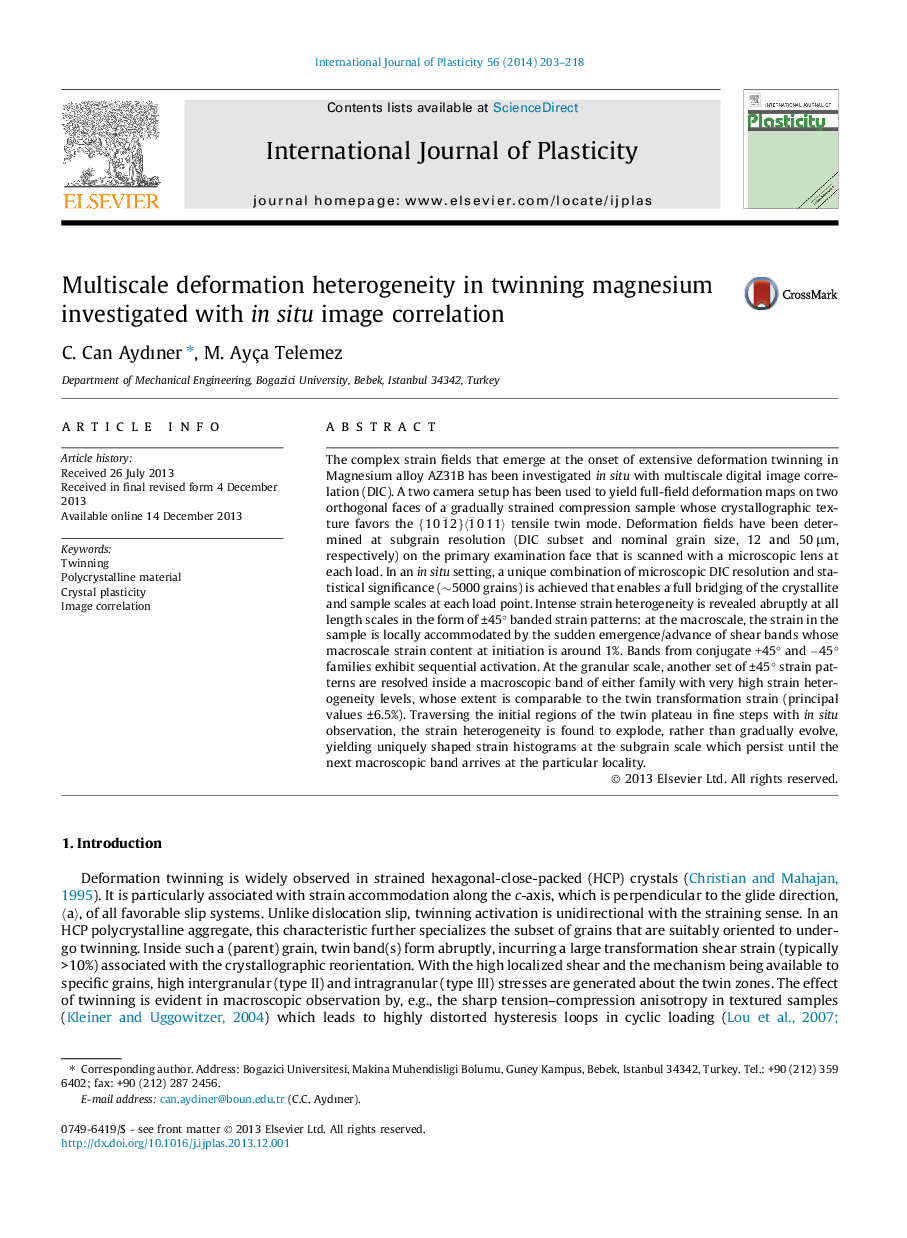| Article ID | Journal | Published Year | Pages | File Type |
|---|---|---|---|---|
| 784400 | International Journal of Plasticity | 2014 | 16 Pages |
•Strain fields due to deformation twinning are in situ observed at multiple scales.•Image correlation application features subgrain resolution over thousands of grains.•±45° banded strain patterns emerge abruptly at all scales, granular to sample.•The strain heterogeneity is found to explode, rather than gradually evolve.
The complex strain fields that emerge at the onset of extensive deformation twinning in Magnesium alloy AZ31B has been investigated in situ with multiscale digital image correlation (DIC). A two camera setup has been used to yield full-field deformation maps on two orthogonal faces of a gradually strained compression sample whose crystallographic texture favors the {101¯2}〈1¯011〉 tensile twin mode. Deformation fields have been determined at subgrain resolution (DIC subset and nominal grain size, 12 and 50 μm, respectively) on the primary examination face that is scanned with a microscopic lens at each load. In an in situ setting, a unique combination of microscopic DIC resolution and statistical significance (∼5000 grains) is achieved that enables a full bridging of the crystallite and sample scales at each load point. Intense strain heterogeneity is revealed abruptly at all length scales in the form of ±45° banded strain patterns: at the macroscale, the strain in the sample is locally accommodated by the sudden emergence/advance of shear bands whose macroscale strain content at initiation is around 1%. Bands from conjugate +45° and −45° families exhibit sequential activation. At the granular scale, another set of ±45° strain patterns are resolved inside a macroscopic band of either family with very high strain heterogeneity levels, whose extent is comparable to the twin transformation strain (principal values ±6.5%). Traversing the initial regions of the twin plateau in fine steps with in situ observation, the strain heterogeneity is found to explode, rather than gradually evolve, yielding uniquely shaped strain histograms at the subgrain scale which persist until the next macroscopic band arrives at the particular locality.
